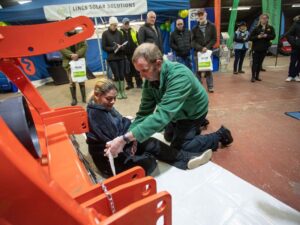
The rural land market could see some massive changes in the coming years if new Government proposals come into effect, the Central Association of Agricultural Advisers (CAAV) has warned.
New planning and housing consultation papers, released on Monday (5 March), have the potential to transform existing planning policy and market prices. “By 2033 there could easily be another 10 million people on these islands, and there are therefore significant levels of housing and infrastructure needed,” explained Jeremy Moody, secretary and adviser to the CAAV. “The Government wants to solve the housing problem by using market housing to fund affordable housing – but if you strip the profitability out of market housing, it could limit the availability of land for any future development.”
There is therefore a fine balance to be found, and interested parties only have until 10 May to submit their responses to the consultation paper. “We’d be very keen to receive CAAV members’ views and to submit them to the Government to help form the future policy,” said Mr Moody.
Speaking at the CAAV spring conference in Cheltenham on Wednesday, Mr Moody ran through the key points raised in the consultation paper. “One of the key thrusts is to capture some of the uplift in development land value – taking into account local house prices – and use it for other infrastructure,” he said.
The existing Community Infrastructure Levy could be revised to reflect local house prices and the scale in capital uplift values. “Fortunately, there are signs that the Government may have listened to us with regard to removing CIL from agricultural buildings – where there is very little uplift in land value – but agricultural land used for housing development could suffer a higher CIL charge.”
Another change is to make the planning permission framework even more plan-based, forcing councils to identify sites for development and developers to push forward with housing projects more quickly. “Whether there is capacity in the construction sector to cope with this is another matter,” added Mr Moody.
Viability assessments could be brought forward to the early planning stage, to rule out sites which are too costly to develop, while there will also be a greater emphasis on small sites: The proposal is that 20% of all sites should be 0.5ha or less.
Green belt protections will remain unchanged, but the Government will take a more strategic interest in the development of new towns – up to five of which could be created in the Oxford-Cambridge corridor alone. And this is where landowners could see their private rights come into question.
“Legislation over the HS2 rail link and Nationally Important Infrastructure Projects introduced the concept of developers being able to acquire associated land for development at existing land use value,” explained Mr Moody. “There is a lot more talk around compulsory purchase and payments being made on existing land use value rather than including any sort of market or ‘hope’ element. This clearly tramples on private landowners’ rights, and it will be important to feed into this consultation and watch any future developments very closely indeed.”
For more information visit www.caav.org.uk.



